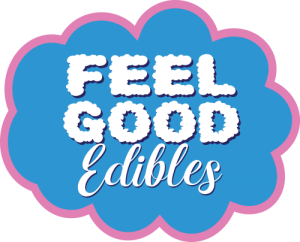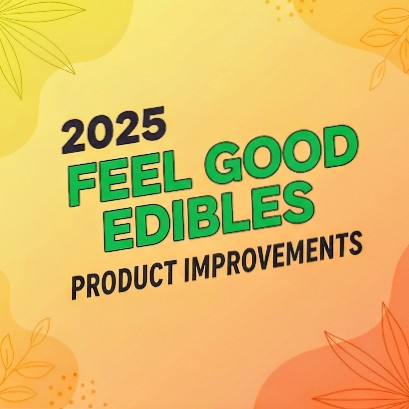What is Microdosing Cannabis?
Microdosing is the practice of consuming tiny amounts of a substance, enough to provide noticeable effects but not so much as to cause intoxication or significant impairment. When applied to cannabis, microdosing typically involves taking doses between 1-5 mg of THC (tetrahydrocannabinol) or CBD (cannabidiol) to achieve subtle therapeutic effects without feeling “high” or impaired.
♦ Try FGE’s high-quality CBD edibles and merchandise for yourself! Check out the FGE shop and FGE Etsy Store ♦
For some, this method offers a more controlled way to enjoy cannabis, particularly for medical purposes such as pain relief, anxiety reduction, and improving focus or creativity. It also allows new or sensitive users to experience cannabis benefits without the anxiety or discomfort that can sometimes come with larger doses.
The Benefits of Microdosing Cannabis
The practice of microdosing cannabis has several advantages, making it an attractive option for many users, especially those seeking medical relief:
- Increased Productivity and Focus
Lower doses of cannabis, especially those high in CBD and low in THC, may enhance focus and creativity. By avoiding the sedative or psychoactive effects of larger THC doses, users report feeling more productive and less distracted by cannabis’ mind-altering properties. - Mood Enhancement Without Intoxication
Microdosing cannabis can boost mood and reduce anxiety without leading to the “high” that full doses of THC typically cause. This can be particularly beneficial for people dealing with stress, anxiety, or depression, where small doses of cannabinoids can stabilize mood without causing cognitive disruption. - Managing Chronic Pain and Inflammation
Many medical cannabis patients use microdosing as a way to manage chronic pain, especially for conditions like arthritis or migraines. The anti-inflammatory properties of CBD, combined with the mild analgesic effects of THC, provide relief without overwhelming the senses, making it easier to continue daily activities. - Better Sleep Patterns
While high doses of THC may induce sleepiness, small doses have been found to promote relaxation without causing excessive drowsiness, making microdosing a helpful option for individuals seeking to improve sleep quality while staying clear-headed during the day. - Fewer Side Effects
With microdosing, users are less likely to experience the side effects associated with higher doses of cannabis, such as dry mouth, red eyes, anxiety, or paranoia. This method allows for a more controlled experience, reducing the likelihood of these unwanted effects.
How to Safely Microdose Cannabis
When exploring microdosing for the first time, it is essential to proceed with caution and mindfulness, particularly if you’re new to cannabis. Here are some steps to ensure a safe and positive experience:
- Start Low, Go Slow
Begin with a tiny dose, typically around 1-2 mg of THC. If you don’t feel any effects after a few days of consistent use, gradually increase the dosage by 1 mg until you find your ideal dose. - Keep a Journal
Tracking your doses, experiences, and effects can help you fine-tune your microdosing regimen. Write down how you feel 30 minutes to an hour after each dose and note any mood, focus, or pain level changes. - Be Aware of Your Environment
The effects of cannabis can vary depending on your surroundings, mental state, and physical condition. When microdosing, consider these variables and how they affect your experience. You may find that the right dose for relaxation at home differs from the one that helps you stay productive at work. - Consult a Medical Professional
If you’re using cannabis to manage a medical condition, it’s essential to consult with a healthcare professional who is knowledgeable about cannabis. For reliable information on the medical use of cannabis, the National Institutes of Health provides valuable resources on cannabis research. - Choose the Right Product
Not all cannabis products are created equally. If you’re using cannabis for specific therapeutic reasons, make sure to choose products that match your needs. For example, if you want pain relief without the high, look for CBD-dominant products with low levels of THC. For further guidance on cannabis products and their effects, the Centers for Disease Control and Prevention (CDC) offers useful public health information on cannabis.
The Future of Cannabis Microdosing
As cannabis legalization spreads, so does interest in more sophisticated methods of consumption like microdosing. Researchers are increasingly interested in how smaller doses of cannabis can produce medical benefits without the cognitive or physical impairment associated with higher doses. The U.S. National Library of Medicine hosts numerous studies that explore the potential therapeutic effects of microdosing cannabis and other substances, laying the groundwork for more widespread adoption of this practice in the medical community.
Conclusion
Microdosing cannabis offers a promising way for individuals to enjoy the therapeutic benefits of cannabis without the high. Whether used to manage chronic pain, anxiety, or sleep disorders, microdosing provides a more controlled and manageable cannabis experience. However, it’s important to approach microdosing carefully, starting with low doses and consulting with a medical professional, especially for those with underlying health conditions. As research continues, this method may become an even more integral part of both recreational and medical cannabis use.
For more information on the science of cannabis and its effects, explore educational resources at reputable institutions like Harvard Medical School or the World Health Organization. These sources provide insights backed by scientific research and can help guide responsible and informed cannabis use.



